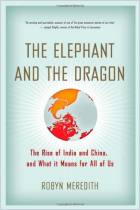Join getAbstract to access the summary!

Join getAbstract to access the summary!
Anil K. Gupta, Girija Pande and Haiyan Wang
The Silk Road Rediscovered
How Indian and Chinese Companies Are Becoming Globally Stronger by Winning in Each Other’s Markets
Jossey-Bass, 2014
What's inside?
India and China have a third of the world’s population; their mutual trade has been and remains vitally important.
Recommendation
Authors Anil K. Gupta, Girija Pande and Haiyan Wang offer an engaging look at the challenges of setting up businesses in India or China. They particularly excel in – and emphasize – the analysis of Indian companies entering Chinese markets. Their case studies and anecdotes will prove instructive to the leadership of any firm from any country seeking to establish operations in China. getAbstract recommends this guide to Asian entrepreneurism to Indian and Chinese corporate leaders, to the leaders and representatives of international firms working in either country, and to management students studying the challenges that multinational corporations face.
Summary
About the Authors
Anil K. Gupta specializes in globalization and emerging markets. Girija Pande has worked in Asia in senior executive positions for more than 30 years. Haiyan Wang is the managing partner of the China India Institute, a research consultancy.


















Comment on this summary